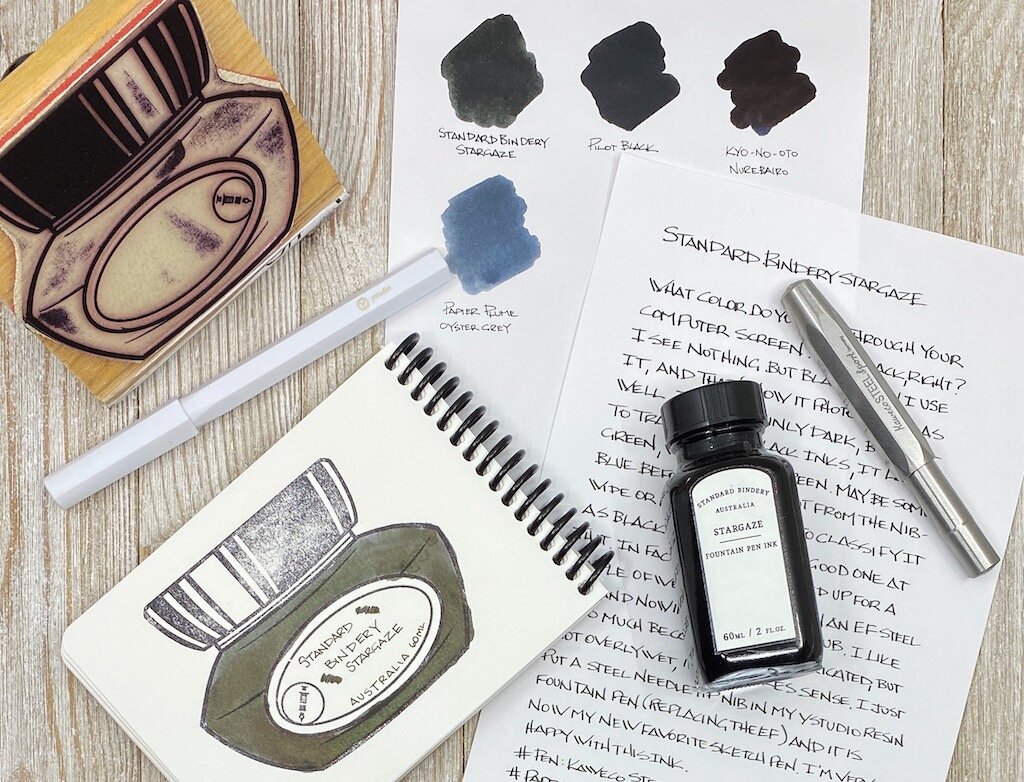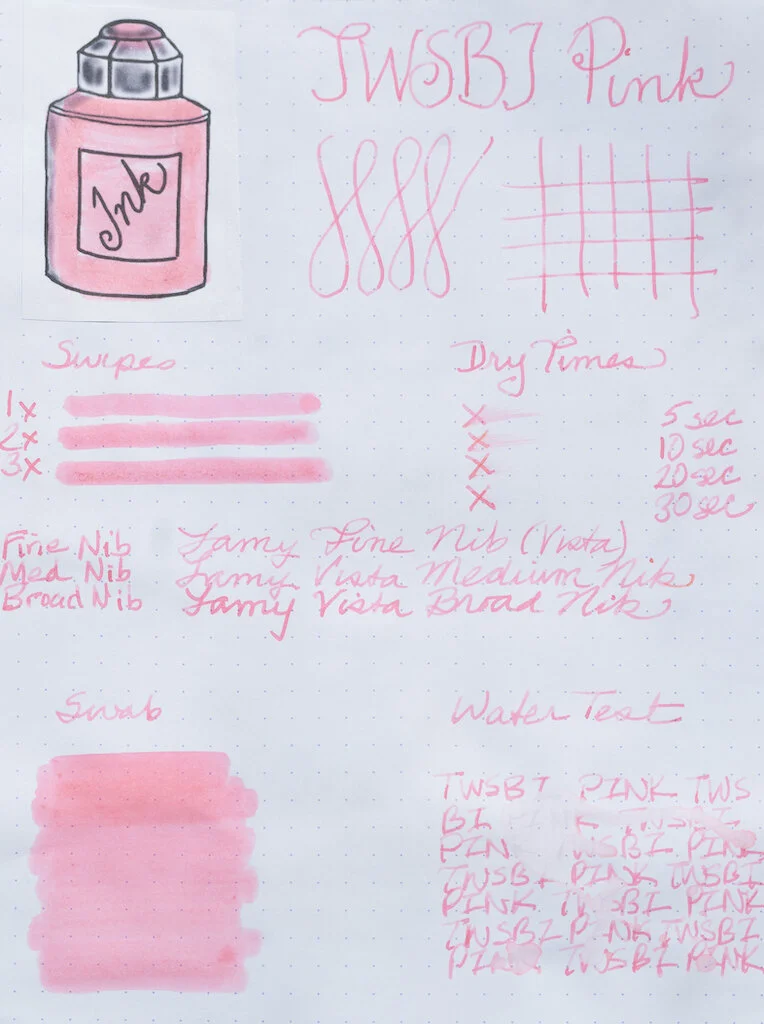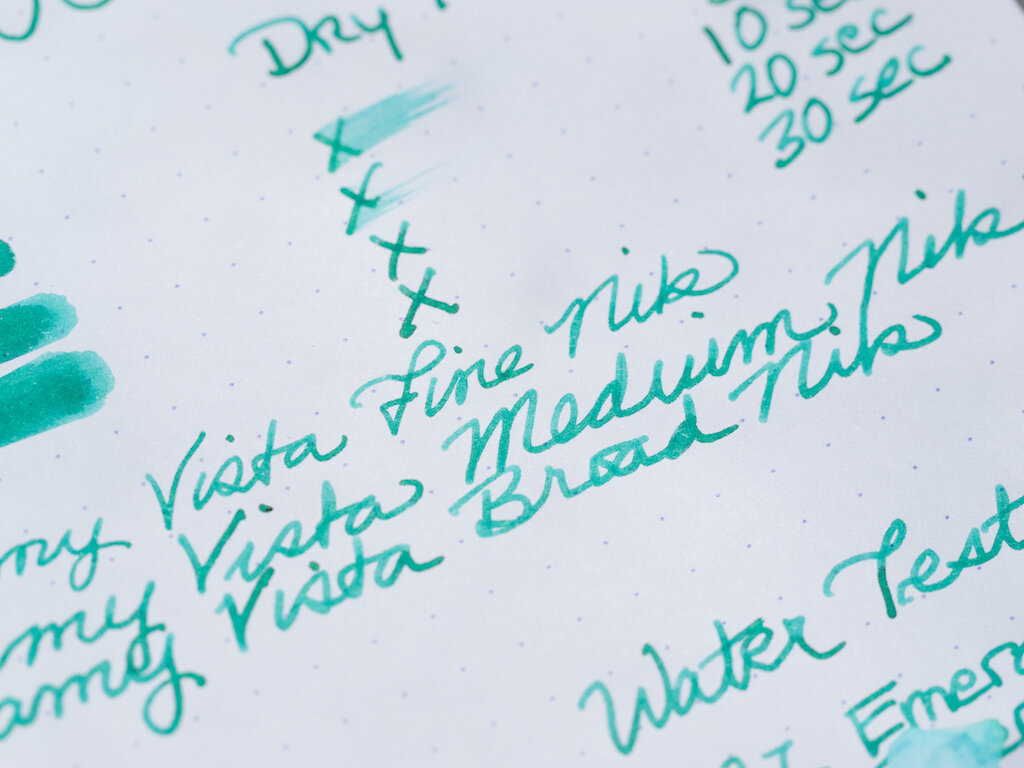Standard Bindery Stargaze is a black ink. Or is it?
This is not one of those internet tricks, where some people will say it’s pink, and others will say it is blue, but I can’t help stare at it and wonder: “What color is this?”
Ink swabs and brushes show the greens and greys that give Stargaze its unique character, but when writing, it’s mostly black. And a pretty darn good one at that.
Standard Bindery is an Australian stationery shop, and six colors make up their in-house ink lineup. Keeping somewhat with my theme of experimentation, Stargaze is honestly the last of the six shades I would have chosen, which is exactly why I did. And now I have not one, but two pens inked up with it.
(Image via Standard Bindery)
Out of all of the images I’ve seen online of Stargaze, Standard Bindery’s own image is the best representation of what color I see this ink as. That shouldn’t come as a surprise, but it’s harder than you think to get these colors right. It’s a deep, night-sky almost black but maybe grey because of starlight. I’d say the name is fairly accurate.
What Standard Bindery gets right with Stargaze is that it has great ink flow in the finest of nibs, to the widest of nibs. I started off using it in a Schmidt steel Extra Fine nib, and it flowed wonderfully. I thought, well, if it is that good, then I can use it with a steel needlepoint nib without issue, and that is exactly the case. It’s not a dry ink, or a wet ink. I guess it is a well-lubricated ink?
For part of this review, I inked it up in my Kaweco Steel Sport with a Medium 14k stub nib, and the performance was equally as nice. The ink just flows, in the most consistent, manageable way possible.
So back to my initial question - what color is Stargaze? I’m lumping it into the black ink category. When next to other true blacks, like Pilot Black and Kyo No-oto Nurebairo it is clearly lighter, but next to a traditional grey ink like Papier Plume Oyster Grey it is much darker. And even in the wide range of nibs I am currently using it with, I don’t see much of the green effect that I see in swabs.
As confused as I am about the color, I’m not confused with the performance at all. In fact, it makes me want to try more Standard Bindery Inks - maybe one at the opposite end of the color spectrum, like Canyon Walk to see if the performance holds up. At $22 for a 60 ml bottle they aren’t cheap, but fall in a good range where I’m ok experimenting a little more. I have high hopes for the results.
(I purchased this ink at a discount from Vanness Pens.)
Enjoy reading The Pen Addict? Then consider becoming a member to receive additional weekly content, giveaways, and discounts in The Pen Addict shop. Plus, you support me and the site directly, for which I am very grateful.
Membership starts at just $5/month, with a discounted annual option available. To find out more about membership click here and join us!










































